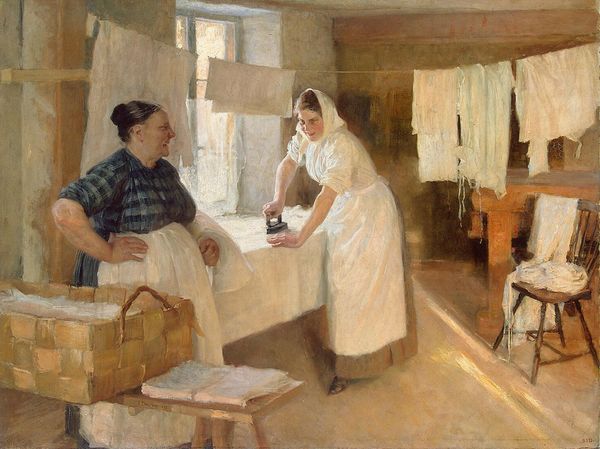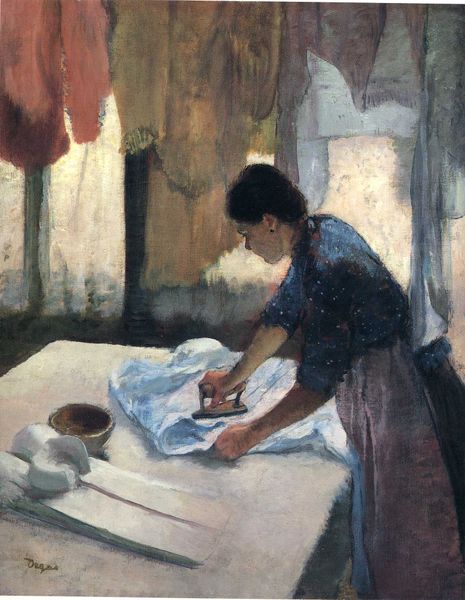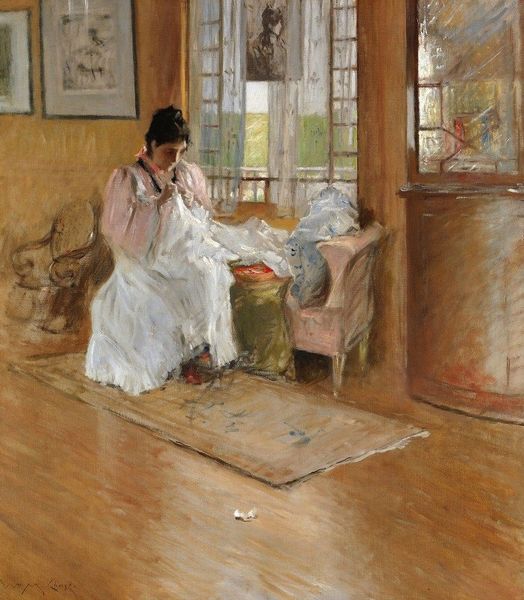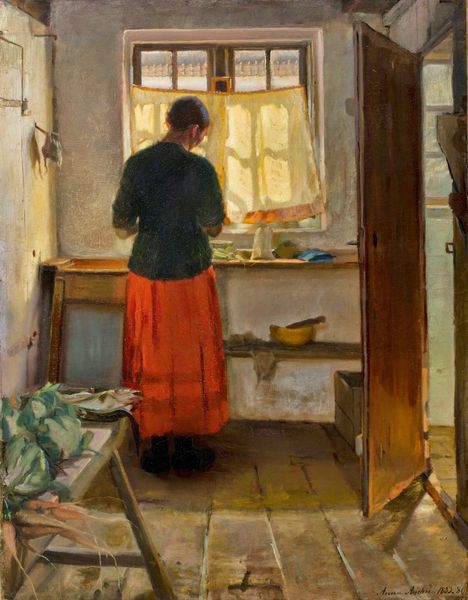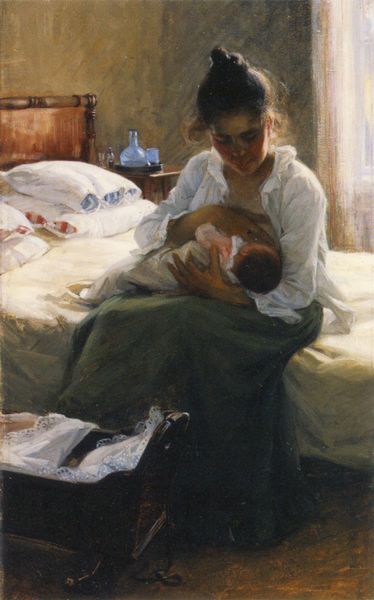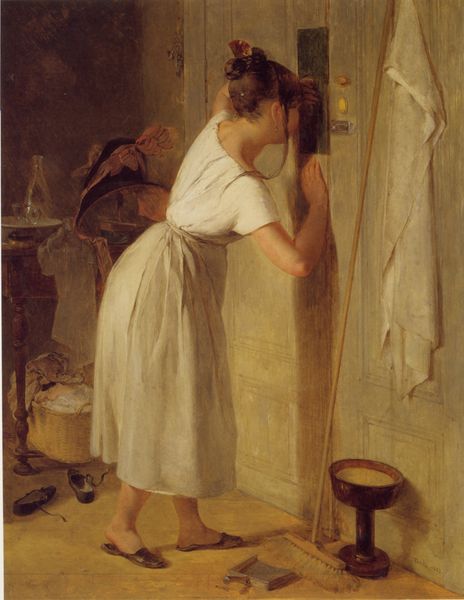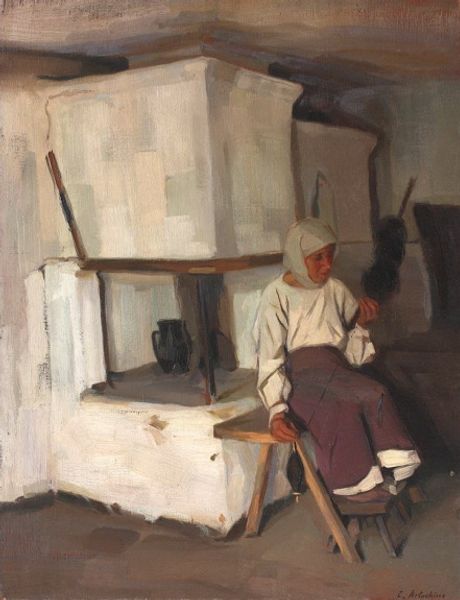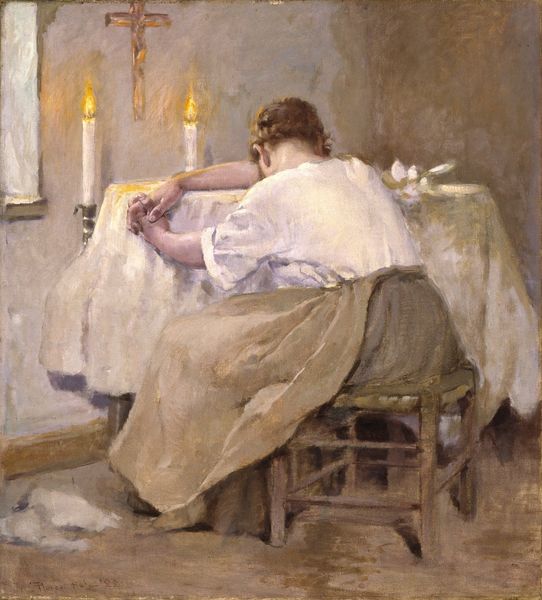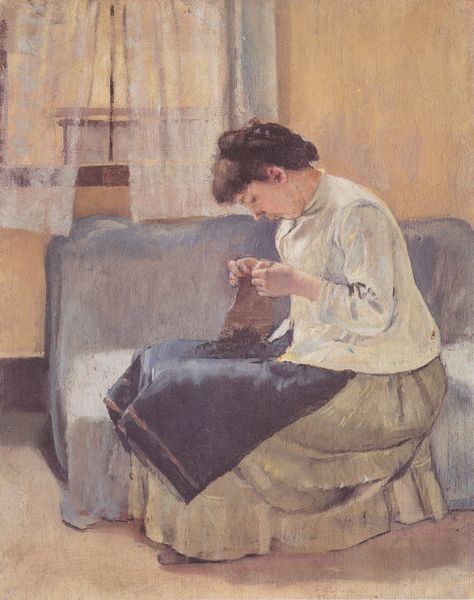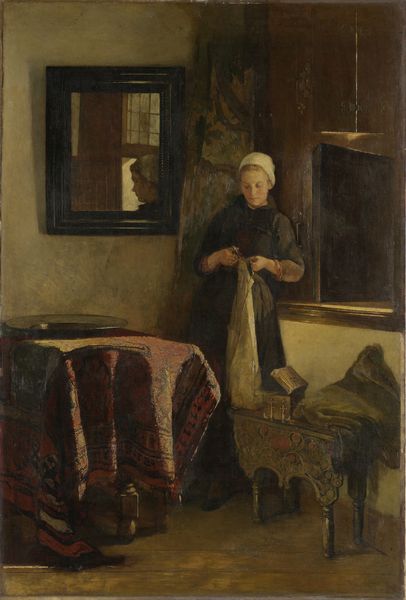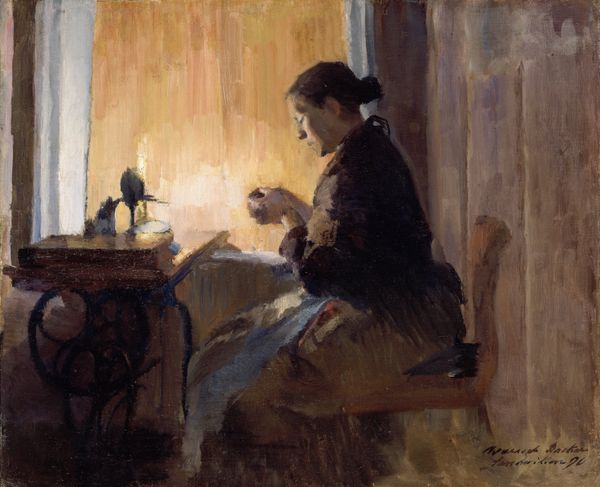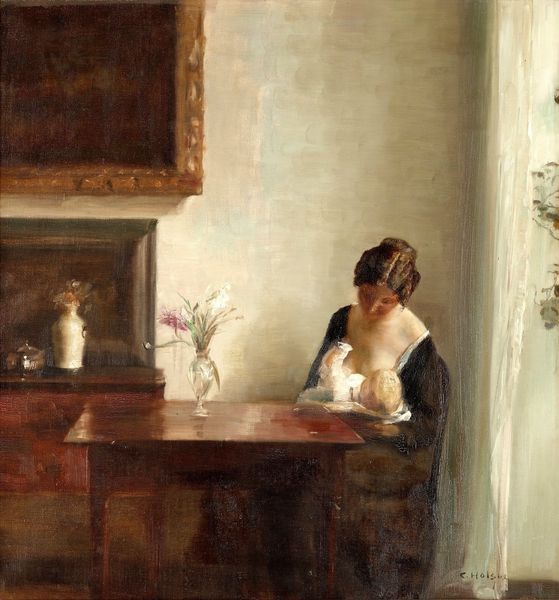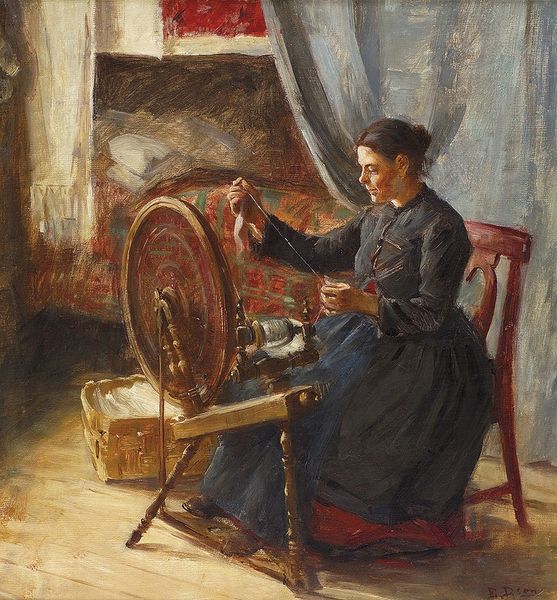
Copyright: Public Domain: Artvee
Curator: Here we see Albert Edelfelt’s “Woman Ironing, Study for the Washerwomen,” an oil painting from 1888. What’s your immediate response to it? Editor: It feels incredibly tactile. All those whites, the textures implied in the damp cloth and rough surfaces… the entire painting has this palpable sense of labor and material. Curator: Edelfelt created this as a study for a larger piece, situating it within the Realist movement's interest in everyday life, yet he also seemed drawn to a softer, Impressionistic approach. Notice how he frames domestic labor; in 1880s Finland, such work was essential yet largely unacknowledged within broader society. Editor: Exactly. It strikes me that the process and means by which these textiles become neat and pressed were important for Edelfelt. You can almost feel the heft of the iron, the dampness, the coarse weave of the fabric. He presents laundry as something beyond just the outcome, the cleanliness; there's immense toil imbued in those lines. Curator: True. And in making such subjects visible, and even aesthetically compelling, Edelfelt touches upon a wider dialogue concerning the dignity of work and gendered expectations. Although there is also an implication of poverty here and it is not as direct as some social realism painters of that time would indicate. Editor: I find myself considering how our interaction with fabrics has shifted since the era captured by Edelfelt. Today, clothing is inexpensive and easily replaced; this painting forces us to reflect on the manual work and resources once invested to maintaining something basic like laundry. It begs one to consider the materiality and labor involved behind our contemporary practices. Curator: His focus on this subject, and the delicate handling of the brushstrokes and composition does elevate what would be thought of as menial. You come away with a feeling for this unnamed, hard working woman. Editor: It really underscores that behind what appears to be mundane domestic life are layers of strenuous activity and thoughtful work with textiles and water. That’s something that has changed dramatically. Curator: It has. Considering its context really does bring to light changes within society. Editor: Indeed; it encourages us to re-evaluate the cost of clean linens, now and then.
Comments
No comments
Be the first to comment and join the conversation on the ultimate creative platform.
